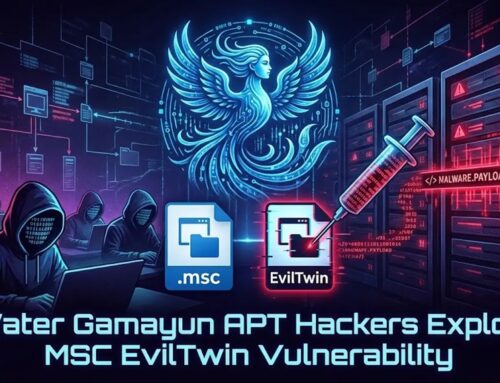
Akira Ransomware Uses SonicWall VPN Exploit to Exfiltrate Sensitive Data
The digital landscape is a battleground, and threat actors are relentlessly seeking new vulnerabilities. A particularly insidious development has surfaced: the Akira ransomware group is now actively exploiting vulnerabilities in SonicWall SSL VPN devices to facilitate rapid data exfiltration, frequently piggybacking on the turbulent waves of mergers and acquisitions (M&A). This tactic turns what should be a strategic business move into a critical security hazard, particularly for companies inheriting IT infrastructures.
Akira Ransomware’s M&A Exploitation Strategy
The Akira ransomware group has demonstrated a sophisticated understanding of organizational weak points, specifically targeting M&A environments. When larger entities acquire smaller companies, there’s often a lag in fully integrating and securing the inherited IT systems. Legacy SonicWall SSL VPN devices, often overlooked or deprioritized during M&A transitions, become prime targets. These devices, designed for secure remote access, can be leveraged by Akira to establish initial access, elevate privileges, and ultimately exfiltrate sensitive data at an alarming pace.
This strategy highlights a significant blind spot for businesses. Attackers capitalize on the rush and complexity of M&A, where security postures might be inconsistently applied or where older, potentially unpatched systems are brought into a new network. The speed and impact of these attacks are amplified, as the acquired company’s infrastructure can serve as a direct conduit for breaching the larger enterprise’s network.
Understanding the SonicWall VPN Exploit
While the specific CVEs weaponized by Akira for this campaign haven’t been publicly detailed in connection with this specific exploitation trend, historical vulnerabilities in SonicWall SSL VPNs provide a crucial context. For instance, SonicWall has previously addressed critical vulnerabilities such as CVE-2021-20038, which allowed for unauthenticated remote code execution. Although this specific CVE might not be the exact one Akira is currently using, it exemplifies the type of flaw that attackers can exploit to gain a foothold. These vulnerabilities often allow threat actors to bypass authentication, execute arbitrary code, or access sensitive information directly from the VPN appliance.
Successful exploitation often grants attackers a critical entry point into the network, enabling them to move laterally, map the internal network, deploy ransomware, and exfiltrate data. The use of a VPN appliance for this purpose is particularly concerning because these devices are inherently designed to be externally accessible, making them high-value targets for threat actors seeking an initial compromise.
Remediation Actions for SonicWall VPN Users
Organizations utilizing SonicWall SSL VPNs, especially those engaged in or fresh out of M&A activities, must take immediate and decisive action. Proactive security measures are paramount to prevent Akira and similar groups from exploiting these critical access points.
- Patch and Update Immediately: Ensure all SonicWall SSL VPN devices are running the latest firmware. This includes applying all security patches as soon as they are released. Regularly check SonicWall’s security advisories.
- Implement Multi-Factor Authentication (MFA): Enforce MFA for all VPN connections. Even if credentials are compromised, MFA provides an additional layer of security.
- Network Segmentation: Implement strong network segmentation between the VPN appliance and critical internal systems. This limits lateral movement if the VPN is compromised.
- Regular Security Audits and Penetration Testing: Conduct frequent security audits and penetration tests on all internet-facing devices, including VPN appliances, particularly post-M&A.
- Monitor VPN Logs: Implement robust logging and continuous monitoring of VPN access logs for anomalous activity, such as unusual login times, failed login attempts, or connections from unexpected geographic locations.
- Review M&A Security Protocols: Integrate comprehensive security due diligence into all M&A processes. This includes thoroughly assessing the security posture of acquired assets and immediately migrating them to hardened, compliant configurations.
- Disable Unused Accounts and Services: Remove or disable any default or unused accounts and services on VPN devices.
Tools for Detection and Mitigation
Leveraging appropriate tools can significantly bolster an organization’s defense against such exploits.
| Tool Name | Purpose | Link |
|---|---|---|
| SonicWall Global Management System (GMS) | Centralized management, monitoring, and reporting for SonicWall devices. | https://www.sonicwall.com/products/management/gms/ |
| IDS/IPS Systems (e.g., Snort, Suricata) | Network intrusion detection and prevention, identifying suspicious traffic patterns. | https://www.snort.org/ https://suricata-ids.org/ |
| Vulnerability Scanners (e.g., Nessus, Qualys) | Identifying known vulnerabilities in network devices, including VPNs. | https://www.tenable.com/products/nessus https://www.qualys.com/security-conference/qualys-guard/ |
| Security Information and Event Management (SIEM) | Aggregating and analyzing security logs from various sources, including VPNs. | (Various commercial and open-source options) |
Key Takeaways
The Akira ransomware group’s pivot to exploiting SonicWall VPN devices, particularly within M&A contexts, underscores a critical evolution in ransomware tactics. Businesses must recognize the heightened risk posed by inherited IT infrastructure and prioritize comprehensive security assessments during and after acquisitions. Diligent patching, robust authentication, network segmentation, and continuous monitoring are not merely best practices but essential fortifications against sophisticated threat actors who are constantly seeking the path of least resistance into lucrative networks.





